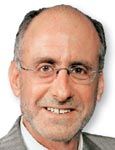Article
Studies shine light on tubeless percutaneous nephrolithotomy, overuse of computed tomography
Improvements in percutaneous stone removal, concern about radiation exposure from computed tomography imaging, and reassurance about the safety of shock wave lithotripsy highlighted presentations about stone removal.

Key Points

Glenn M. Preminger, MD, director of the Comprehensive Kidney Stone Center, Duke University, Durham, NC, offered his perspective on these topics.
New techniques, including "tubeless" procedures, appear to improve outcomes from percutaneous nephrolithotomy (PNL) .
"I applaud investigators in these types of studies because the investigations allow us to push the envelope and better define how we can reduce patient morbidity and ultimately improve patient outcomes," Dr. Preminger said.
"My principal concern about tubeless procedures is the need for some larger-scale, randomized, prospective trials to help us better define which patients would not be candidates for a tubeless procedure."
One out of five patients with acute stone disease receives more than the International Commission on Radiation Protection's recommended limit for occupational exposure (50 mSv).
Concerns about CT-associated radiation exposure coincide with recent reports on the growing use of CT imaging and the cumulative radiation exposure associated with repeat or multiple scans.
Although this concern is not limited to urology, CT has become the standard imaging modality for the initial diagnosis of stone disease, supplanting x-ray and intravenous pyelography over the past 10 years. In addition, non-contrasted renal CT is also commonly used after stone removal to follow individuals for evidence of recurrent nephrolithiasis.
Two studies at the AUA meeting provided more evidence for consideration of patients' cumulative radiation exposure from imaging studies. In the first, investigators at Duke University and the University of Texas Southwestern Medical Center in Dallas retrospectively reviewed medical records of patients who were evaluated for acute stone episodes, including all imaging studies performed within a year of the acute stone event. The results demonstrated that 20% of patients had received more than the standard "safe dose" of radiation and another 20% had cumulative radiation exposure at the upper limit of the safety range.
A study from Loma Linda University in California assessed the potential impact of a reduced-radiation CT protocol on identification of small renal calculi. Researchers inserted stones measuring 2 to 4 mm into cadaveric kidneys, then performed CT imaging at settings of 30, 60, and 100 milliampere-seconds (mAs). The rate of stone detection did not differ by mAs setting, and specificity exceeded 95% for all stone sizes. More important, radiation exposure was decreased by 70% with the 30 mAs setting compared with 100 mAs.
"Both studies help raise awareness that we might be over-imaging some of our patients," said Dr. Preminger. "We need to be cognizant of how much radiation we use when patients are imaged. Yet we must also keep in mind that CT has become a valuable tool, and without it, many of the minimally invasive procedures we use to perform stone removal would be hampered."
Whether CT-associated radiation exposure poses a real risk has yet to be determined, he added. Moreover, the accuracy of the generally recognized safety threshold for imaging-related radiation exposure is unclear.
"I believe this will be a very fruitful area for further research," said Dr. Preminger.
Data confirm the interrelationship among stone disease, diabetes, and obesity. However, development of diabetes is dependent on stone burden, rather than on the type of stone treatment, thus refuting a possible association between SWL and diabetes.
Multiple reports addressed an issue raised a few years ago by a large study that suggested an increased risk of diabetes and hypertension in patients treated with shock wave lithotripsy who were followed for almost 20 years. However, none of the recent studies has uncovered evidence to support the earlier report.
"The potential bioeffects of shock wave lithotripsy, however, are still an area of concern, and one where there have not been any well-conducted, long-term, randomized, prospective studies," Dr. Preminger said.
"We need long-term clinical trials to determine whether there are potential risks in performing shock wave lithotripsy."















